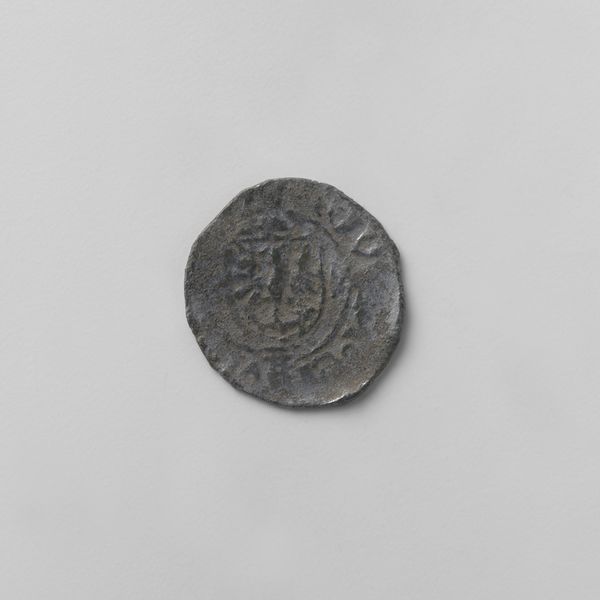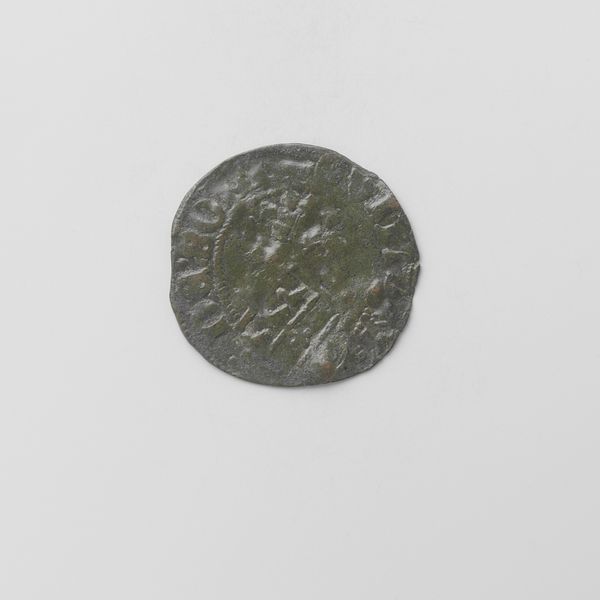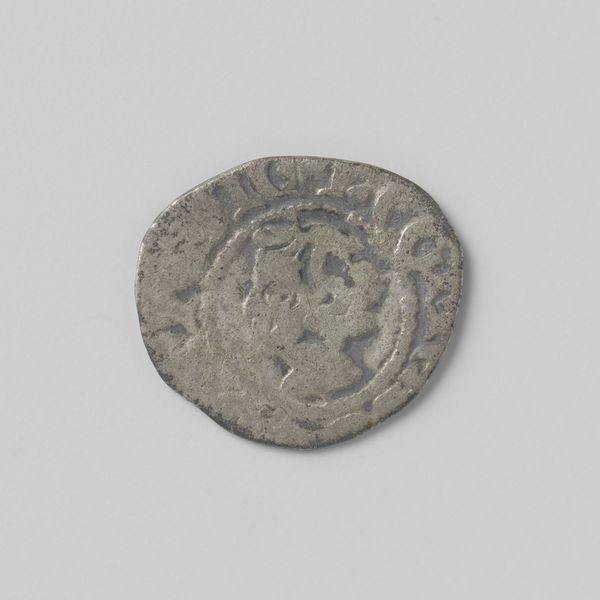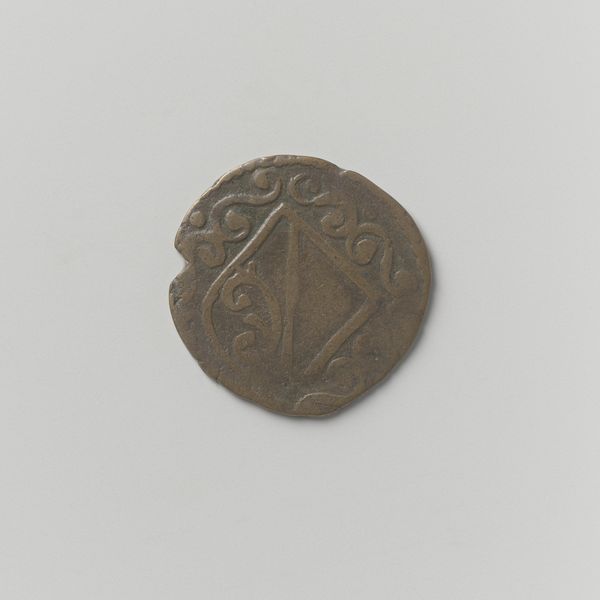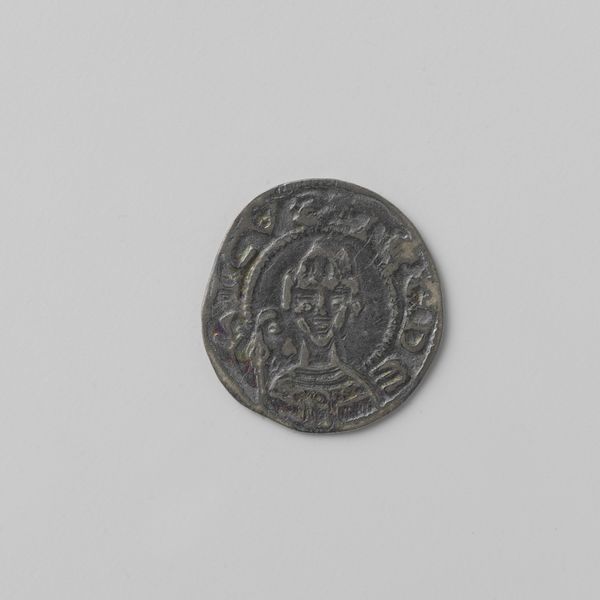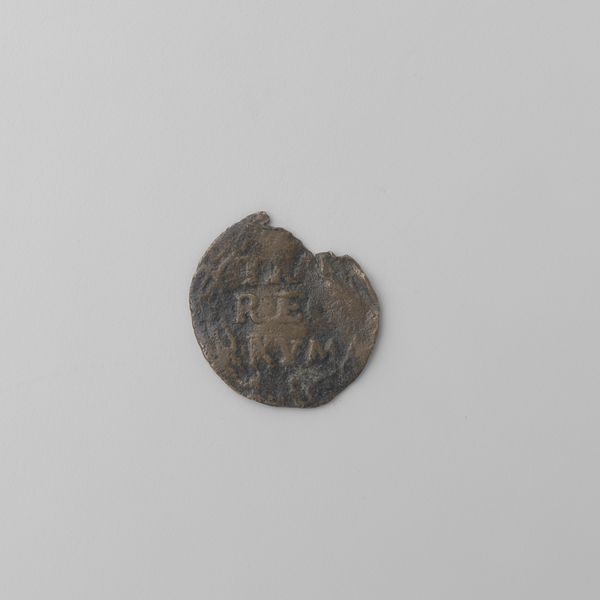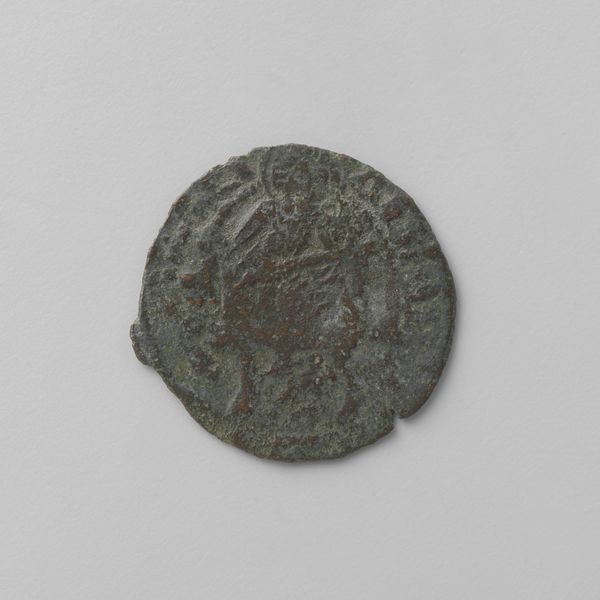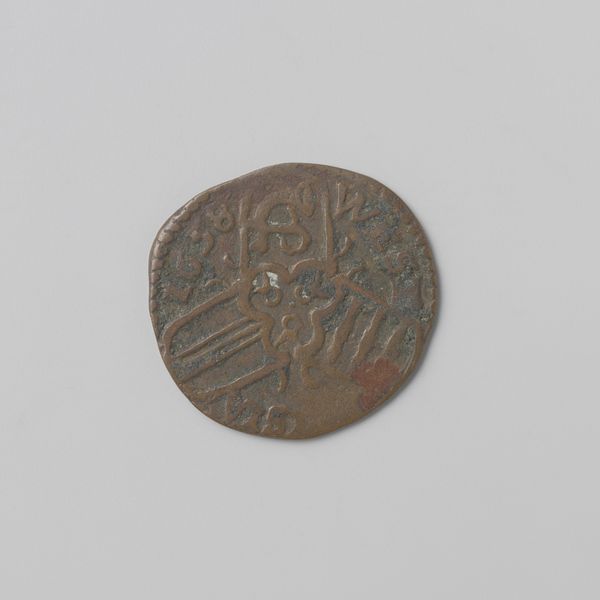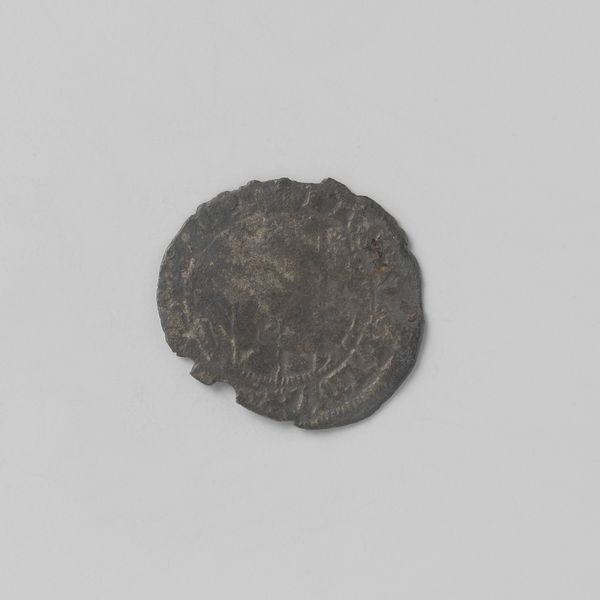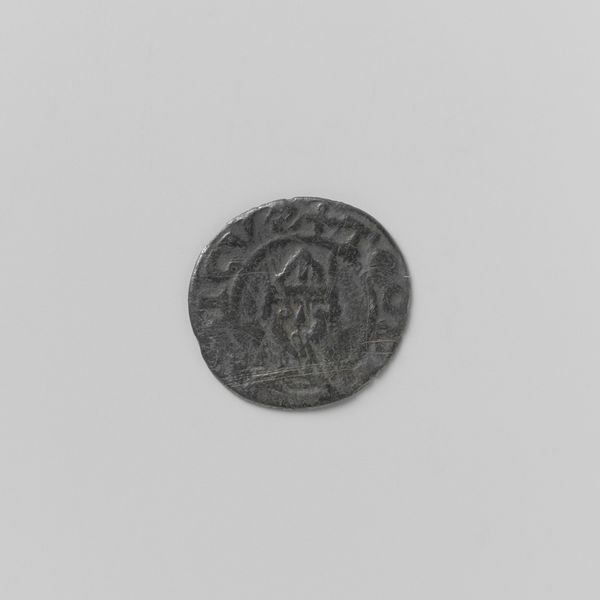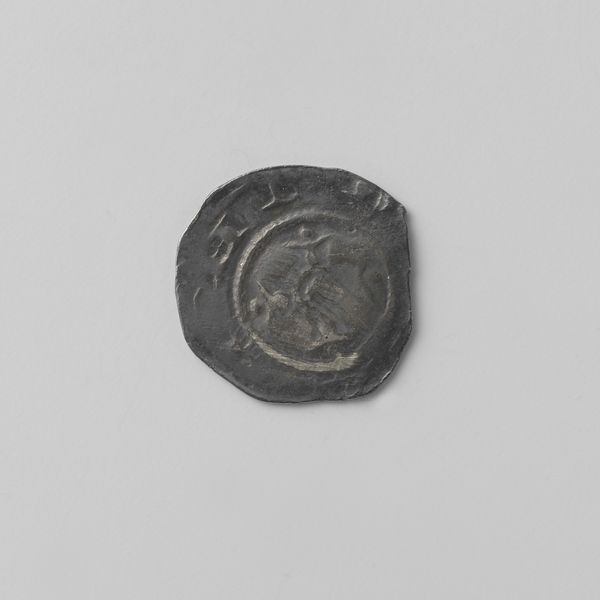
metal, sculpture
#
baroque
#
metal
#
sculpture
#
ancient-mediterranean
#
sculpture
Dimensions: diameter 2.0 cm, weight 1.47 gr
Copyright: Rijks Museum: Open Domain
Curator: Let's delve into this fascinating piece of monetary history: a Reckheimse duit of Ferdinand van Aspremont-Lynden, dating back to 1652. Ferdinand was the Lord of Reckheim during that time. Editor: It feels worn, almost comforting in its age. Like holding a tiny piece of someone’s story, faded with time. It makes me wonder what hands it has passed through. Curator: Indeed, its aged appearance speaks volumes about circulation and the material culture of the period. Duiten were low-value coins, used primarily for everyday transactions by common people. So this little metal disk likely funded numerous purchases, from bread to beer! Editor: The wear makes it hard to discern the design, but there is what appears to be some sort of heraldic shield on its face surrounded by baroque curlicues? It is so easy to overlook such objects but so poignant when seen up close. Almost miniature sculpture, really. Curator: Precisely! The heraldic shield identifies the coin’s origin and authority, a statement about property and dominion of Ferdinand, while its size and base metal construction reveal a practical awareness of trade. The question for me is: where was it produced, who minted the coin and where was the metal sourced? All very revealing regarding economic power. Editor: All things considered, though, it is also somehow precious. A little poem of time, labor and long gone trade winds made tangible in the simplest of designs. A pocket-sized story made in metal. Curator: Yes, and by understanding the materiality of objects like these, we reveal not just who could afford them, but we glean invaluable insight into social stratification and the lives of early modern Europeans. It encourages us to view a common person's asset as fine sculpture or at the very least fine economic expression. Editor: So here it rests now – tiny, worn, and imbued with three centuries of quiet history. I see the trace of countless transactions—the humblest and perhaps, paradoxically, the most evocative.
Comments
No comments
Be the first to comment and join the conversation on the ultimate creative platform.

